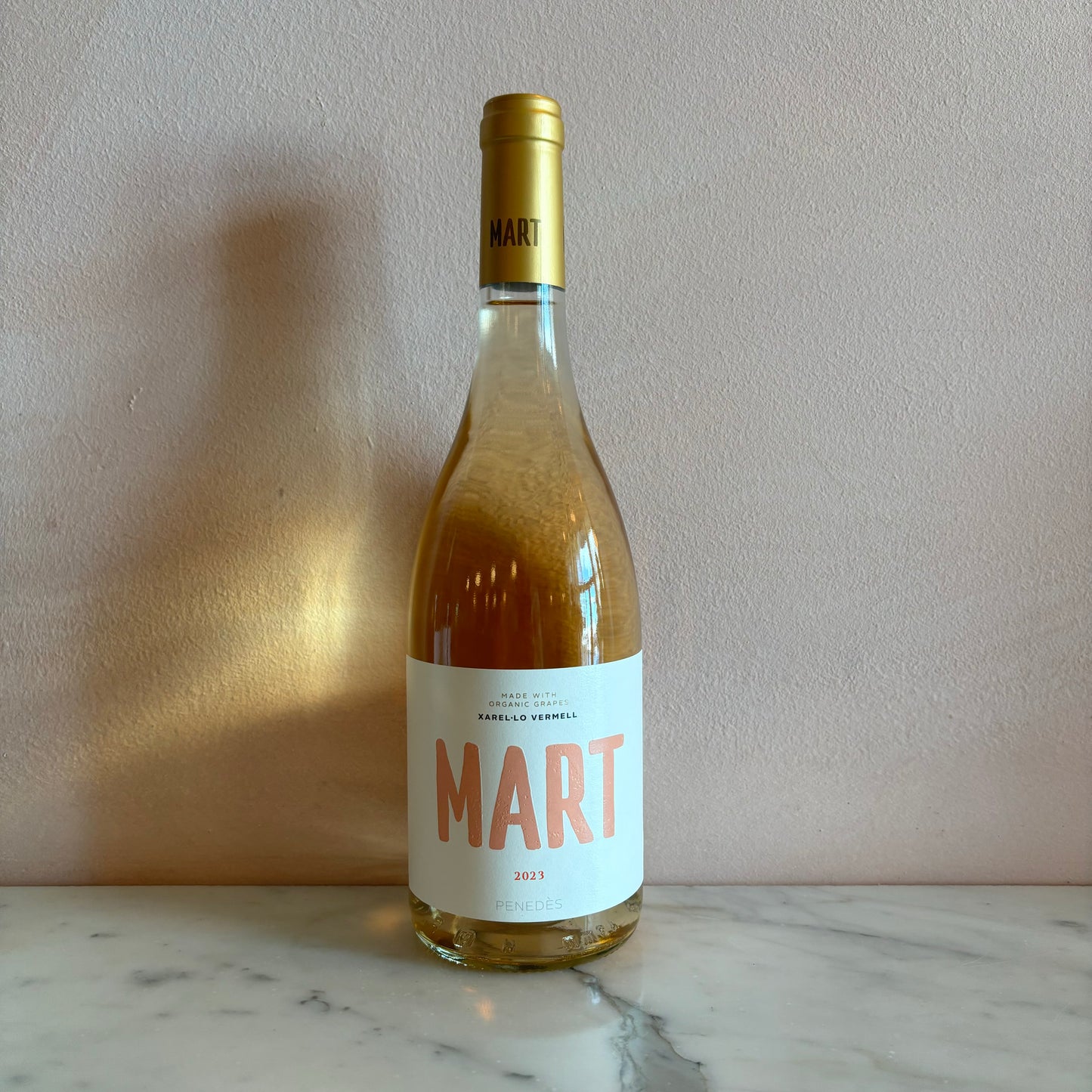Gramona
Gramona "Mart" Rosat, Catalunya, Spain 2023
Gramona "Mart" Rosat, Catalunya, Spain 2023
Low stock
Couldn't load pickup availability
FROM EUROPEAN CELLARS:
THE WINE: With their historical interest in the indigenous Xarel.lo and growing scientific evidence of its vital importance for the longevity of their sparkling wines, Gramona has begun to study the massale diversity of this variety in their own vineyards. While the majority of their Xarel.lo turns a golden color when ripe, a small percentage appears to have mutated into a pink-skin version of the grape – predominantly in the 2 ha, southeast-facing, parcel of Les Solanes. The pale color of this rosé comes from a 48-hour maceration before pressing. With this additional skin contact, combined with the already high levels of antioxidants present in the juice of this variety, Mart cannot only be enjoyed in its youth (peaches and strawberries), but it has the capacity to develop for several years in the bottle as more pink peppercorn nuances emerge.
THE PRODUCER: The Gramona family traces their history as grape growers and winemakers back to 1850, when Josep Batlle managed the vineyard of La Plana for a local family. His son Pau, who was active in the wine cork trade, was uniquely positioned to begin selling the wines made from La Plana to sparkling wine producers in France suffering from the ravages of phylloxera. By 1881, Pau was able to purchase the vineyard of La Plana and establish Celler Batlle. At this time, Pau realized that Xarel.lo, the indigenous grape to this part of Catalunya, was instrumental in his success selling wines to France due to its ability to make well-aged sparkling wines. Pau’s daughter Pilar married Bartolomé Gramona, and together, they continued to expand their vineyards and sparkling wine business. In 1921, “Gramona Cava Champagne” first appeared on their bottles of sparkling wine. By 1945, Pilar and Bartolomé’s sons, Bartomeu & Josep Lluis, took over the management of Gramona and began to elaborate the cuvées that the estate is known for today. III Lustros was conceived in 1951 but wouldn’t be released until 1961 after nearly ten years of aging sur latte. The early belief of Pau Batlle that Xarel.lo was on par with the great grapes of Champagne in their capacity to age gracefully sur latte was proven by his grandsons.
Today, Jaume Gramona runs the family business with his son, Roc, and his cousin’s son, Leo. Each generation has brought something new to the estate with Xavier Gramona, Leo’s late father, expanding the scientific understanding of lees aging and the inherent properties of Xarel.lo while Jaume has pursued the conversion of all their vineyards – owned and leased – to organic farming and biodynamic farming. Leo and Roc were expected to add to their family’s legacy, and together, they established a small experimental project, L’Enclos de Peralba, to showcase site expression and the indigenous varieties of Penedès.
The wines made at Gramona are sourced from up to 303 hectares of vineyards that are farmed organically and biodynamically. This includes their estate vineyards totalling 72 hectares. The soils in the Alt Penedès, where Gramona is situated, are primarily clay limestone. Close to the Anoia River, they become more alluvial, and near the looming Montserrat mountain, there are areas of slate. Their top sites, La Plana, Font Jui, Mas Escorpí, and La Solana, are all located close to Celler Batlle, where the wines are made and aged. These sites are also distinguished by calcite formations known as têtes de poupées , which slowly break down in the soils. Whether it is these unique soils, their location and a gentle rise between the Anoia to the north and several natural springs to the south, or the diversity of the massale selections of Xarel.lo and Macabeu found in these sites that makes Gramona’s best sparkling wines so unique could be debated. Combined with the generations of labor and talent the Gramona family has devoted to these vineyards, it is the bedrock on which their reputation has been established.
At Gramona, time is never an issue. The wines receive perhaps the longest average aging than any other sparkling wines in Spain and are never released until they are perfectly mature. Eighty-six percent of the sparkling wines produced in Spain are released after only 9 months, while at Gramona, theirs are aged a minimum of 30 months, and in the case of Enoteca, for 15-17 years! At the top of their range, III Lustros, Celler Batlle, and Enoteca are all aged under cork and are riddled and disgorged by hand. III Lustros and Enoteca Brut Nature are finished without a dosage, while Celler Batlle receives a modest dosage of 7g/L from a sweet wine solera dating back over 100 years. This solera is also the source for the dosage of La Cuvee and Imperial.
Long considered a pioneer for their work in the cellar and releasing sparkling wines only after extended aging, Gramona now farms their estate organically and biodynamically with certifications from the Consell Català de la Producció Agraria y Ecològica and DEMETER. They are also promoting sustainability in their production by reducing their carbon footprint – using geothermic energy and recycling all the water used at the estate. With the grapes they source from neighbors, they have formed Alianzas por la Terra, an organization that is actively promoting a change to certified organic viticulture combined with biodynamic principles to bring life back to the soils in the region and encourage biodiversity in the zone.
In 2017, Gramona received Paraje status for their vineyards clustered around Font de Jui, a spring located in the heart of their Domaine. After years of frustration and struggle to improve the reputation of Cava, they withdrew from the DO in 2019, becoming founding members of Corpinnat.


